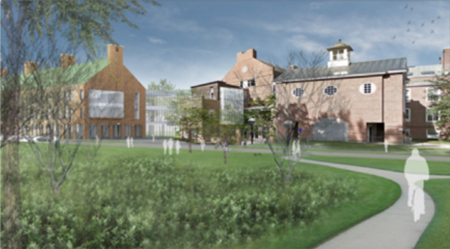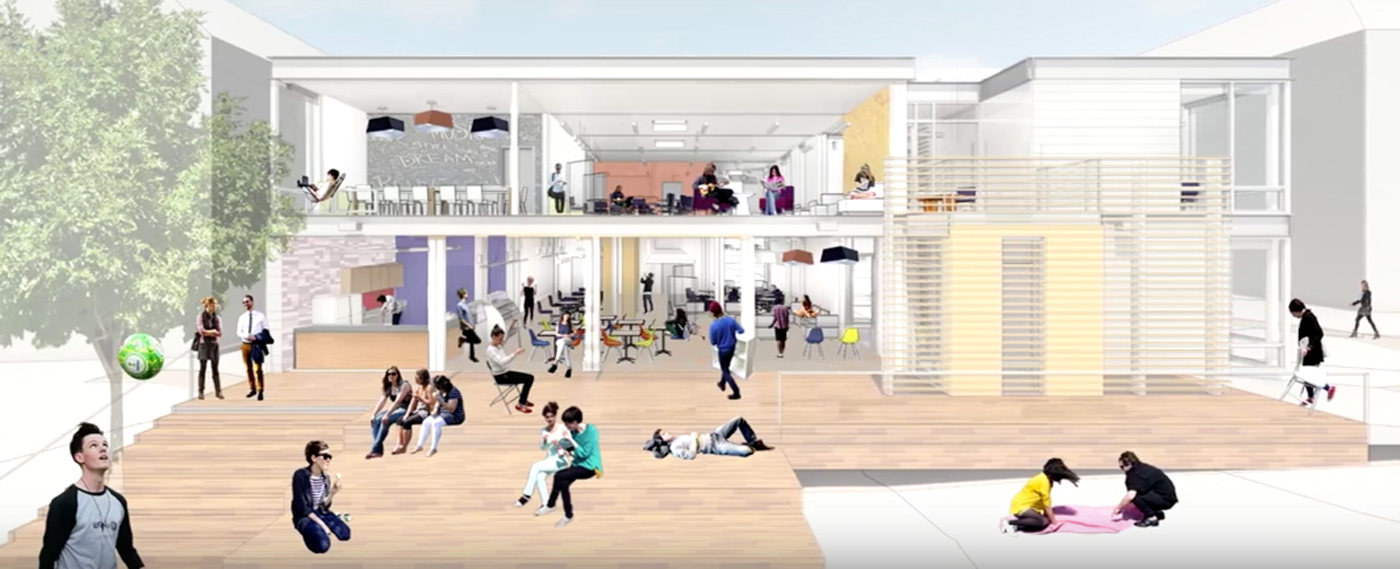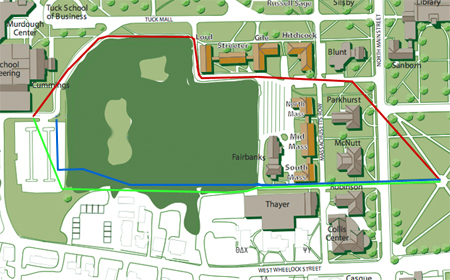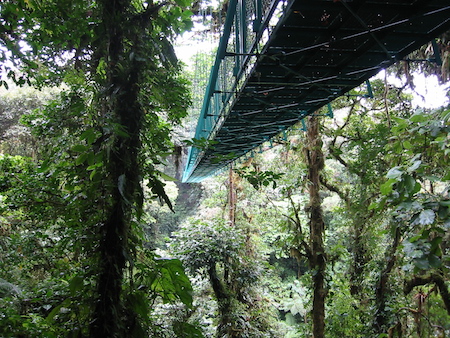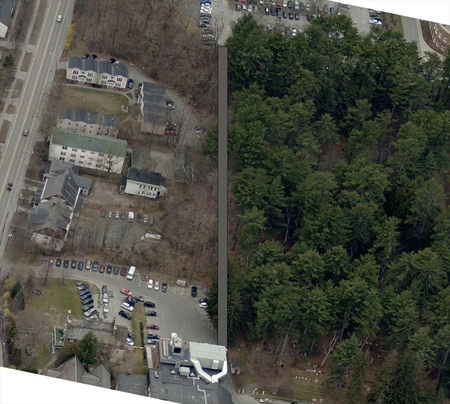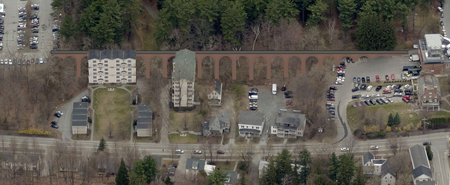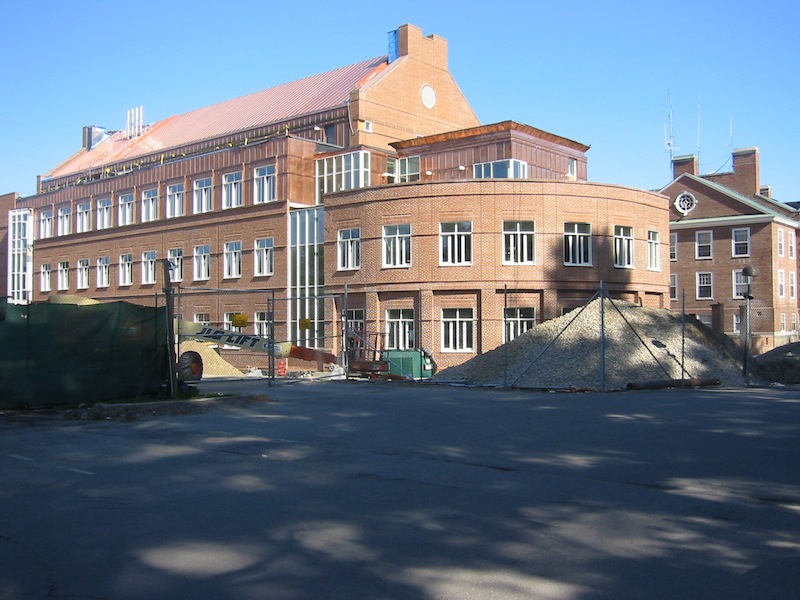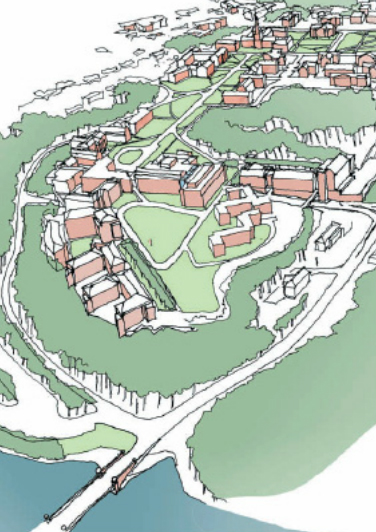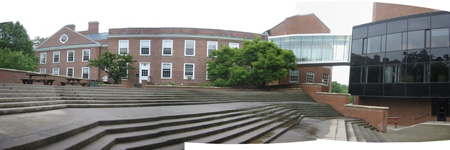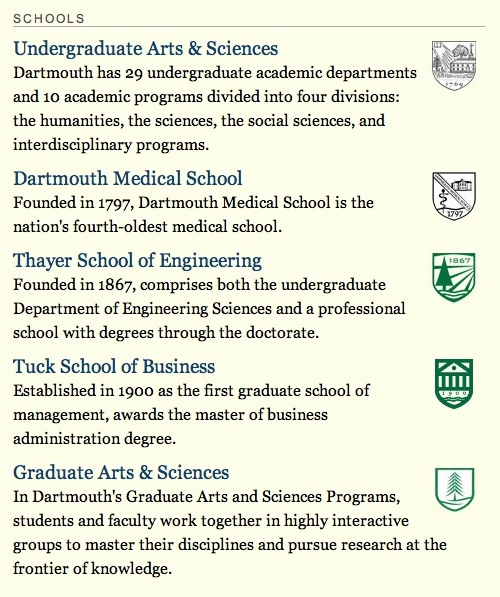The Valley News reports that Hanover residents voted on Tuesday for the zoning amendment that the college had requested as part of a project related to Thayer School expansion.
Residents also approved an amendment that would allow development near or in a cemetery in some circumstances. The official zoning amendment proposal form (pdf) supplies this detail:
Providing direct pedestrian access from the parking structure and Thayer campus to the College’s administrative offices, Mass Row, 53 Commons and downtown is desirable to the Town and College. In order to accommodate an elevated pedestrian walkway, construction of footings [in the Dartmouth Cemetery] is anticipated.
While the former parking deck idea is not a part of this zoning change, a parking structure certainly would be an important terminus for such a viaduct. The Planning Board minutes of 2 February 2016 (pdf), written back when the parking deck was a hot topic, say:
A pathway is also proposed from a proposed parking facility to the Green, to enhance connectivity of the west campus to the main campus, and to provide easy off-highway access from the proposed parking facility to the Green.
Aha. The viaduct that Larson proposed during the late 1920s, shown on his 1928 master plan, looks set to become a reality. (See also the Westway proposal here.)
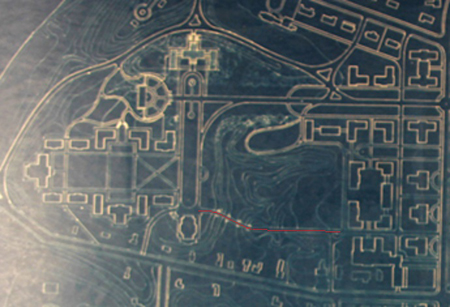
The map associated with the zoning amendment gives a general idea of the route of the new work, with the viaduct shown as a dashed orange line through the cemetery:
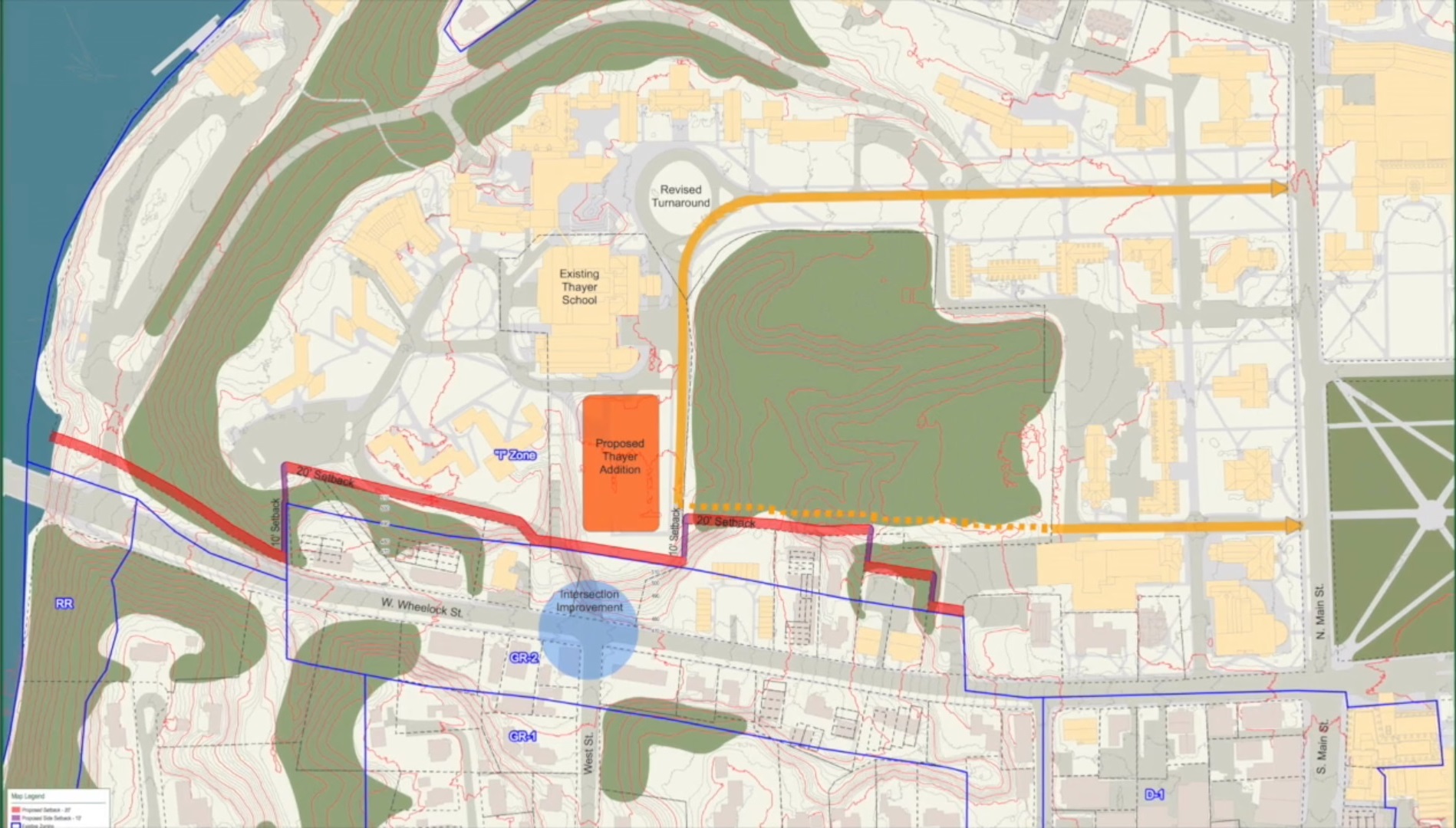
The viaduct presumably will be an extension of Cemetery Lane, the road known until relatively recently as Sanborn Lane. (The map above also shows the realignment of the bottom of Engineering Drive at West Wheelock Street and the reconfiguration of the turnaround at the end of Tuck Mall.)
The cemetery gate, minus the unfortunately-located parking signage, would make a nice entrance to the viaduct. Here’s hoping the bridge is a work of the engineer’s art worthy of this historic place and its Classical monuments of carved stone. Wilson Architects, the firm that appears to be designing the Thayer building, designed a set of impressive campus pedestrian bridges at Vanderbilt University (a view of one, a view of another).
This will not be the first bridge in the cemetery: during the early 1880s, the cemetery association spanned the northern ravine with a timber bridge. It shows up on this 1890 map and a photo was reproduced in Dartmouth Now. It became unsafe and was removed by the 1920s.
———-
[Update 05.16.2016: Reference to Dartmouth Now added and historic bridge re-described as being of timber, not iron.]
[Update 05.12.2016: Note about dashed orange line added.]
